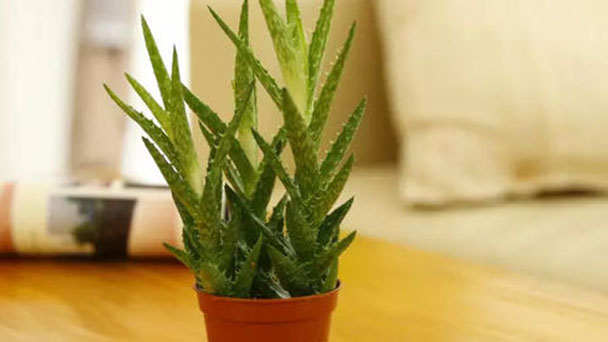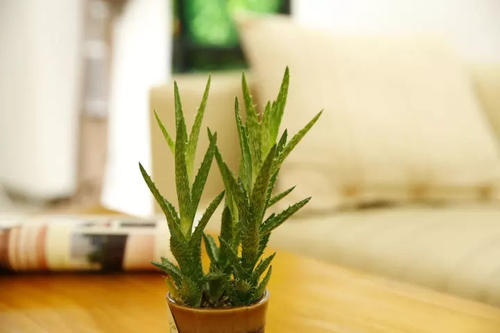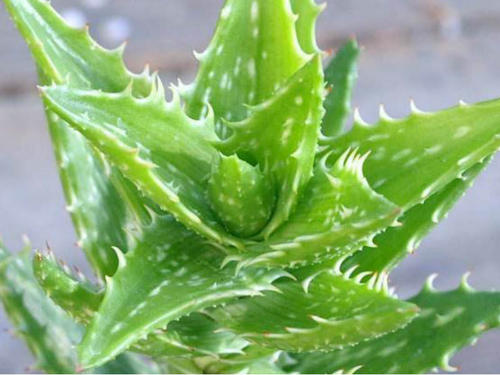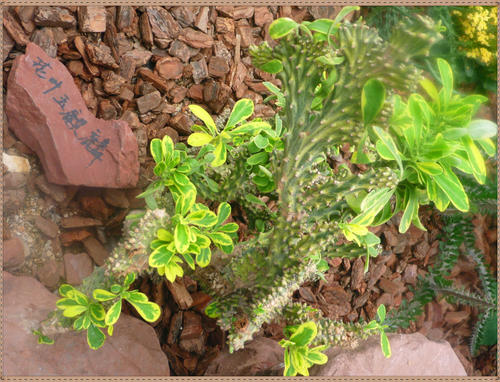Tiger tooth aloe (Aloe juveuna) profile
Written by Maggie
Mar 03 2021

Tiger tooth aloe (genus aloe), scientific name Aloe juveuna, belongs to the family Liliaceae. Tiger tooth aloe is originally from Madagascar. Small aloe vera stem is initially erect and prostrate. Leaves are spiral alternate, stem top arranged into a closer rosette disc, triangular leaves, concave surface convex back, apex acute, pale green to yellow-green, brownish green when the light is too strong.
Tiger tooth aloe picture

Morphological features of tiger tooth aloe
Leaves of tiger tooth aloe are 0.5 cm long with white teeth, the surface and back of the leaves are irregular white stars, sometimes even linear.
Tiger tooth aloe garden use
Tiger tooth aloe is small and delicate and easy to grow, so it has become a new species of aloe that has been rapidly popularized in recent years. Tiger tooth aloe can be cultivated in general families, but it has little medicinal value.
Tiger tooth aloe propagation
Tiger tooth aloe is propagated by cutting.
How to grow and care for tiger tooth aloe
Environment
Tiger Tooth Aloe likes a warm environment, but is afraid of strong light irradiation. The suitable temperature for growth of Tiger Tooth Aloe is 15-30℃. The temperature in winter can not be lower than 8℃, and the temperature will stop growing if it is lower than 8℃.
Basin soil selection
Tiger Tooth Aloe potted soil is typically lose and breathable, so home potted soil can be made from a mix of garden soil, plant ash, or leaf rot. In addition, you can add an appropriate amount of organic fertilizer to the soil.
The pot can be made of clay, with a diameter of 8-12 cm. In addition, Tiger Tooth Aloe can be replaced once a year in the spring.
Lighting care
Tiger tooth aloe is afraid of strong light, so in the maintenance to control the light, avoid direct light maintenance, light is too strong, and is not conducive to the growth of Tiger tooth aloe.
Tiger Tooth Aloe can be normally grown indoors in a cool and ventilated place, and can give some astigmatism during growth.
Watering care
Tiger Tooth Aloe has a lot of water requirements, generally in the spring, summer and autumn three seasons, almost every 10 days will be watered once.In winter, you need to control the amount of watering and keep the soil dry.
Fertilization care
Tiger tooth aloe has a large demand for nutrients, so fertilization should be sufficient, generally applied every 2 weeks 1 time, mainly with thin compound fertilizer.
When entering the winter, the temperature is relatively low, you can reduce fertilization or no fertilization. When the temperature rises in the spring, flower friends can topdress 1 time again.
Flowering and Fragrance
Tiger Tooth Aloe rarely flowers. It's more likely to bloom in the wild, where unbranched spikes containing orange-red flowers appear in the middle of summer.

Where to grow tiger tooth aloe
Tiger tooth aloe is not cold hardy, so if you live in a zone that gets colder than 20° F (-6.7° C), it’s best to plant this succulent in a container that can be brought indoors.
Tiger tooth aloe does well in full to partial sun. Plant in an area of your garden that gets 6 hours of sunlight a day.
Tiger tooth aloe pest or diseases
The principal pests encompass the regular family bugs such as aphids and mealybugs.
Wash these pests away with blasts of bloodless water from a backyard hose.
It's additionally viable to take away aphids and mealybugs the usage of a rag soaked in water with a little bit of dish soap.
If these techniques don’t work, deal with the Tiger tooth aloe using homemade insecticidal soap.
Tiger tooth aloe isn't regarded as poisonous to people or horses.
It may also damage puppies and cats if ingested.
The gel-like substance determined in the leaves might also motivate diarrhea, lethargy, and different signs and symptoms of gastrointestinal distress.
Keep Tiger tooth aloe away from small pets and keep away from developing shut to different flowers in gardens.
It's no longer an invasive plant, however the many shoots it produces enable it to unfold and overtake smaller plants.
Luckily, it's now not a fast-growing plant.

Latest Updated
- Benefits of Bugleweed - 7 Science-backed Health Benefits
- Bugleweed Dangers & Side Effects - Is It Poisonous?
- How to Plant Evergreen Trees - What You Should Know
- When to Plant Evergreens - Grow Guide for Evergreen Trees
- 12 Wonderful Evergreen Shrubs for Your Garden
- 12 Popular Evergreen Plants with Pictures for Beginners
- When And How To Prune A Lilac Bush Like a Pro
- How to Grow & Care for Lilac Vine (Hardenbergia Violacea)
- Japanese Lilac Tree (Syringa Reticulata) Care & Propagation Guide
- Shumard Oak Pros and Cons - What to Know
Popular Articles
- Winter maintenance of Antirrhinum Majus
- How to Grow Terminalia Mantaly Tree
- How to Grow and Care for Crossostephium Chinense
- How to grow Antirrhinum Majus in spring
- Peristeria Elata (Dove Orchid) Profile: Info & Care Guide
- Underwatered Snake Plant (Sansevieria Trifasciata) - Signs And How To Fix
- How to Care for Brazilian Jasmine Plant (Mandevilla Sanderi)
- How to Grow & Care for Graptopetalum Purple Delight in Summer
- Rosa Chinensis (China Rose): Plant Growing & Care Tips
- How to Care for Baby Sun Rose (Aptenia Cordifolia)